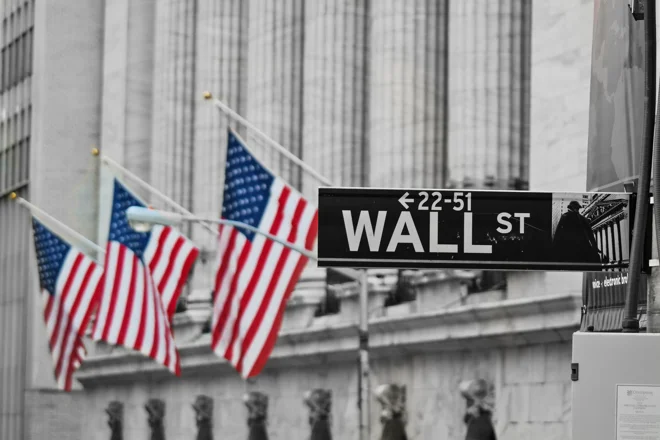Back in the 1990s, investors worried about a potential spike in bond yields if Bill Clinton pushed through with his plan of economic stimulus. James Carville, his adviser, joked that, rather than as the next US president or a baseball player, he wanted to be reincarnated as the bond market, because “you can intimidate everybody”. Today’s rise in yields, of course, is worth watching. While a fast pace of increase could turn out to be a challenge for risk assets, at least for some time, the main thing here is that it’s happening as economic growth looks set to accelerate. These two dynamics – rising yields and faster growth – are inextricably linked. With any rebound in inflation likely to be temporary, central banks aren’t planning any policy tightening whatsoever. They may even step up their asset purchases if financial conditions were to tighten unwarrantedly. This macro backdrop is typical of early-cycle recoveries and overall constructive for equities – but it could be more volatile too.
The reason counts more than the fact: US 10-year nominal yields reached 1.50% and the market is getting worried that they’ve risen so much. However, that this level was going to be reached at some point this year has been a consensus view for a while. The surprise, perhaps, is that it happened faster than expected. The key point is that the reason why yields are rising matters a great deal for market performance. Higher yields and breakevens suggests better growth prospects (of course, a positive), potentially offsetting a higher discount rate (a negative). Since the late 1990s, both equity and credit markets have done best when US 10-year real yields and inflation expectations have risen together (and worst when they’ve both declined). Real yields and inflation expectations rise together when investors expect a stronger, more sustained economic recovery. A stronger recovery allows investors in equities, corporate bonds and other cyclical assets to price in faster future growth.
The wider backdrop is just as important: The rise in yields should be viewed in context of how it’s impacting other financial assets and the economy. So far, this move higher has only had a relatively contained impact on equities and credit spreads, while the US dollar hasn’t strengthened. This means that financial conditions are still easy – not tight – despite the rise in yields. Crucially, following the 2013 ‘taper tantrum’ experience, the Fed is committed to being more transparent on its policy path. We would expect just a gradual tapering of its asset purchases from next year. And, with the expected inflation rebound likely to be seen as only temporary, actual rate hikes are probably 2-3 years away. Central banks worldwide are beginning to lean against any unwarranted tightening in financial conditions. The European Central Bank appears to be preparing to boost its bond-buying programme, perhaps the Bank of Japan too. The Reserve Bank of Australia restarted its purchases lately.
Here’s why this matters:
The common pattern | Yields rise when things get better: As the market sees the growth recovery finally approaching – as vaccination efforts gather pace and lockdown restrictions start to get lifted – global bond yields have broken higher. The move has been broad-based geographically, with 10-year yields in several advanced countries jumping more than in the US. Real and nominal yields have both picked up. And, though the yield level remains low, the increase has accelerated most recently. It’s only natural for investors to wonder whether rising yields could disrupt equities and other risk assets. We’ve seen this before, time and again. This balancing act between faster economic growth and rising bond yields is a rather typical feature of early-cycle recoveries and is likely to be with us for some time – with the upcoming US fiscal package probably contributing to this market environment.
The speed of the move | More rapid than expected: Yields, however, are rising at a pace that’s approaching the one at which equities sometimes do experience temporary setbacks. The impact on risk assets depends on whether the rise in yields is largely growth-driven (happening because of expectations of an improving economy, our base case, in which case it’s short-lived) or policy-driven (happening because of more hawkish central banks, in which case it’s more long-lasting). So we think the recent combo of rising equities, commodities and bond yields could continue, with different drivers of this recovery and reflation trade leading at different points. However, we expect the back and forth between periods of rate pressure and recovery in risk assets to be a persistent part of the macro landscape over the coming months and, potentially, an occasional challenge for tactical risk-taking.
Meanwhile, yields and inflation will likely stay in focus, but there’s a lot more going on…
A busy week: Central banks could possibly push back more explicitly against any further yield rise – if this is perceived to harm the nascent economic recovery. Data-wise, investors are likely to scrutinise whether European inflation continues to rise from low levels and, more generally, if the purchasing managers’ indices show any further sign of pipeline price pressures building around the world. We forecast a rise in inflation over the next few months, but only temporarily. The US jobs report will be key to assess the degree of spare capacity and for any insight on wage growth. Even though investor focus on the fiscal front is likely to remain on the US, the UK budget should be interesting as well, given pressure to extend fiscal support while also navigating a significant deficit. The newsflow suggests extra stimulus, but also that corporate taxes may perhaps rise – though we think any increase is likely to be gradual and still make the UK economy competitive from a tax point of view.
Daniele Antonucci | Chief Economist & Macro Strategist
This document has been prepared by Quintet Private Bank (Europe) S.A. The statements and views expressed in this document – based upon information from sources believed to be reliable – are those of Quintet Private Bank (Europe) S.A. and are subject to change. This document is of a general nature and does not constitute legal, accounting, tax or investment advice. All investors should keep in mind that past performance is no indication of future performance, and that the value of investments may go up or down. Changes in exchange rates may also cause the value of underlying investments to go up or down.
Copyright © Quintet Private Bank (Europe) S.A. 2021. All rights reserved.





